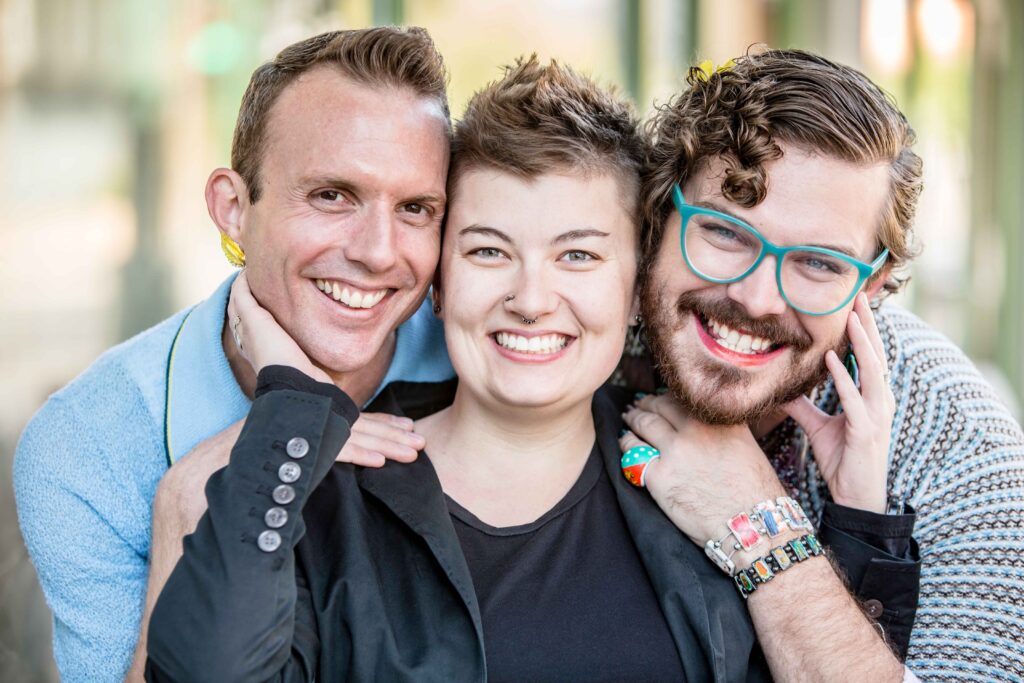
Female-to-male (FTM) and female-to-nonbinary (FTN) top surgery is not a one size fits all procedure.
Or at least it shouldn’t be.
It is a gender affirming surgery that can offer flexibility to customize the appearance of the chest that you are seeking. Of course, this also depends on several factors including your particular anatomy so there are limitations.
The following are some of the most common options and considerations to help you obtain the gender affirming chest that you are desiring. This specifically relates to the double incision approach with or without the nipple-areola complexes:
Incision shape
There is some latitude in preference for the shape of the incision used for the performance of the top surgery. However, your particular anatomy can significantly impact this, creating some limitations such the desire to have straight scars despite having very large breasts.
The common options for scar shape include:
- Curvilinear
- Straight
- “U” shaped
- Hockey stick
The curvilinear is a soft, flowing curve that blends well with the body and looks natural. It doesn’t stand out abnormally or grab your attention for the wrong reasons. This shape can be adapted to essentially all breast sizes and shapes.
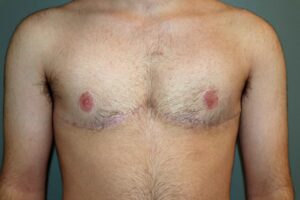
Curvilinear incision
The straight line incision is generally best used with smaller breasts. When applied in the right situation and with a limited length, it can provide a nice result for those individuals desiring this shape.
The “U” shaped incision essentially follows the crease of the pre-existing female breast. In many situations, this deep curve does not provide the ideal look for those seeking a masculinized chest.
Finally, there is the hockey stick shaped incision which follows along the lower border of the pectoralis major. Some people tout it or even request it. This design, however, can be somewhat unnatural, contrived and too stylized and most male chests do not truly have this appearance.
Incision location
This is a relatively insignificant issues and not one that is specifically requested. It has to do with the general height of the scar on the chest wall. Generally, this is largely determined again by your anatomy and the range of placement is not broad.
Flat versus not flat chest
Transmen seeking gender affirming top surgery want a flat chest that appears masculinized in nature. This virtually always includes nipple areola complexes.
The overwhelming majority of FTN individuals also seek flat chests with complete removal of the breasts via a mastectomy. However, there are a very small number of gender fluid or androgynous individuals who want to preserve some breast tissue rather than have it all removed. Typically, they are seeking more of an extreme breast reduction that is either an “A” or “B” cup size. This provides them with more flexibility in appearance depending on their gender feelings.
Finally, there are the rare individuals, typically FTN, seeking gender affirming breast reduction rather than either a flat chest or androgynous look. One motivation for this approach is to retain the ability to breast feed following top surgery.
Nipples versus no nipples
In top surgery, there is the option of having nipples (nipple-areola complexes) or not having them. Virtually all transmen seeking top surgery do want to keep their nipple-areola complexes. For gender nonbinary individuals, a sizable minority elect not to retain them.
The choice is yours.
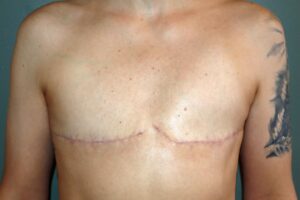
FTN without nipples
Tattooed nipples versus using your own nipples
Some individuals, for a variety of reasons, prefer to have nipple-areola complexes tattooed on rather than preserve their own via grafting. They undergo the gender affirming mastectomy and then later on in time electively have nipples tattooed on at their desired location and size.
There are also some individuals who don’t want to use their own nipples and are not sure if they even want any in the future so they elect to have top surgery without nipples. If at any point in time in the future they change their mind and decide to have nipples, this can be accomplished with tattooing.
Size of the nipple-areola complexes
There is a relatively wide range of sizes that can be used for nipple-areola complexes both for FTM and FTN. Typically the range for FTM is smaller and at the lower end of the spectrum of diameters whereas for FTN it can essentially include the entire gamut – small to large – though smaller than the “normal” female nipple-areola complex.
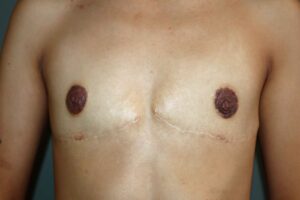
Larger nipple-areola complex desired for this FTN individual
Location of the nipple-areola complexes
There is a lot of latitude for placement of the grafted nipple-areola complexes. They can be placed, in essence, in a masculine location, a female location or anywhere in between depending on one’s desires. This is all subjective as even with a more masculine location, there still is a broad area for placement on the chest that would still be gender acceptable.
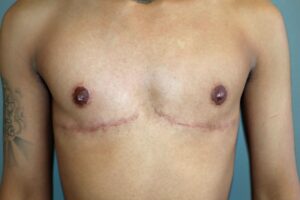
FTM with a more lateral location of the nipple-areola complexes
Customize your top surgery
As you can see from the above, both FTM and FTN top surgery are not “only one way, no options” procedures.
You do have choices to make that can allow you to obtain more individualized top surgery results that you are desiring. Of course, your specific anatomy will influence your options and affect the ultimate appearance.
You can essentially have it your way!
Contact us
For more information on FTM or FTN gender affirming top surgery or to schedule your consultation, you can contact us at the Arizona Center for Aesthetic Plastic Surgery either by calling (480) 451-3000 or by email.
Steven H. Turkeltaub, M.D. P.C.
Scottsdale and Phoenix, Arizona






